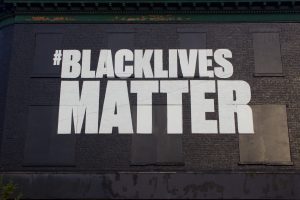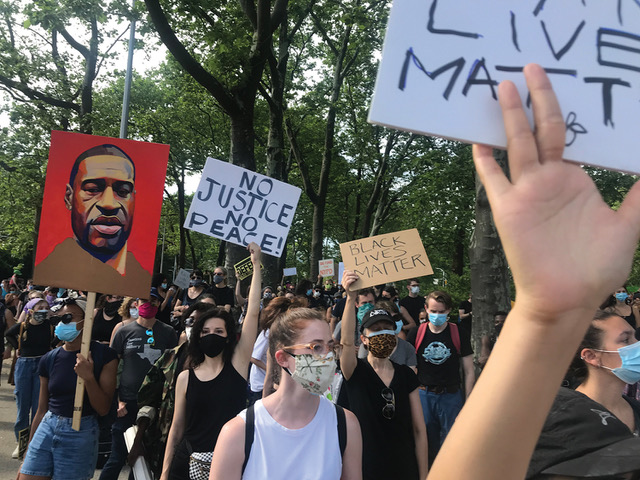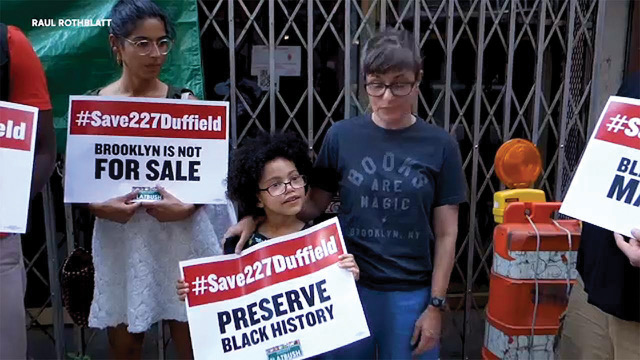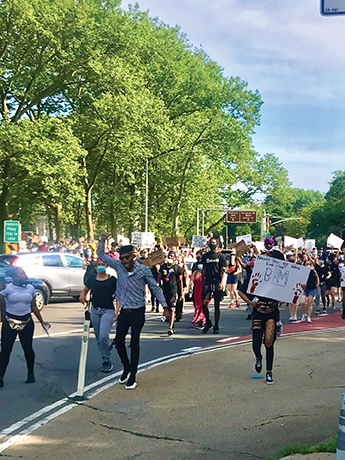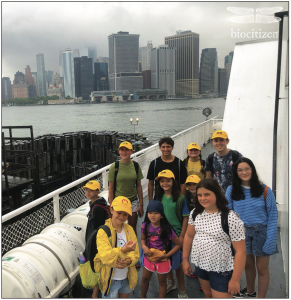In This Fight to Preserve History, Black Lives and Black Landmarks Matter
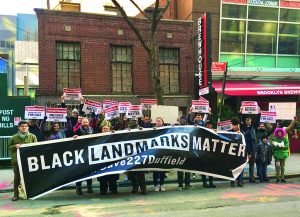
In mid July, the Landmark Preservation Commission of New York City held a public hearing. It took place over Zoom due to the Coronavirus Pandemic. It it had been in person, it would have been a packed room. For nearly three hours, members of the community gave testimony in support of Item 1 on the docket, LP‐2645, also known as the proposal to give landmark status to 227 Duffield Street.
The battle for 227 Duffield Street has been ongoing (a deeper history is chronicled in part one of this series.) During a virtual Landmark Preservation Commission (LPC) meeting at the end of June, the commission calendared 227 for an official hearing on whether it should be given Landmark Status. They then set that hearing for just two weeks later. It may sound fast-moving for those familiar with NY bureaucracy standards. On the other hand, those who have had a stake in this fight might say it took closer to two decades.
In her testimony during the hearing, the Attorney General for New York, Letitia James, said, “I’ve been involved in this effort to preserve 227 Duffield Street,” before stating that the building is “actually known as 227 Abolitionist Place.” As previously reported, Duffield Street was renamed Abolitionist Place in the Fall of 2007 to commemorate the numerous buildings and people on the block active in the anti-slavery movement during the Civil War era. As for 227, the building was the home of two prominent abolitionists named Harriet and Thomas Truesdell, and is long thought to have been part of the Underground Railroad. That same year, the building was saved from demolition when its owner Joy Chatel (lovingly known as “Mama Joy”), narrowly won a court settlement in which the city agreed the property wouldn’t be taken by eminent domain as part of the Downtown Brooklyn Development Plan. However, the LPC’s decision to not landmark the home left it vulnerable for future developers to try the same thing again. And that’s exactly what’s happening now.
So what’s happened between now and 2007?
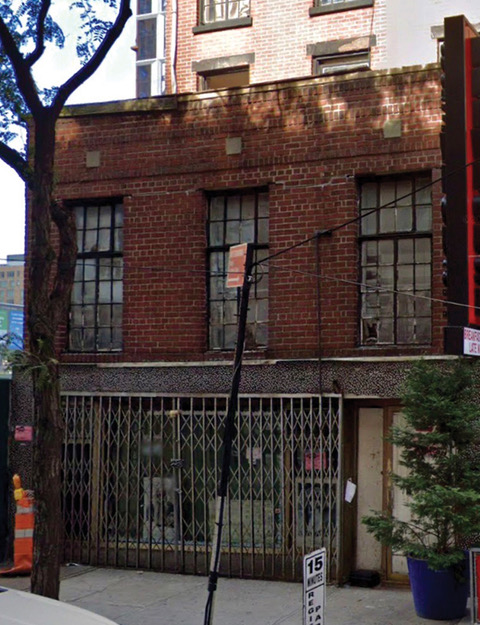
In 2014, Joy Chatel passed away. A longtime champion of 227 Duffield’s preservation, Chatel was responsible for drawing many activists and organizations to the cause. Leading up to the 2007 settlement, Chatel and Lewis Greenstein— whose property on Duffield Street was also at risk of being seized and was also thought to be part of the Underground Railroad, formed the Duffield Street Block Association. They also connected with the activist group Families United for Racial and Economic Justice.
Of those who spoke during the recent July hearing, few went without mentioning “Mama Joy” Chatel in their testimonies. “She treated me like a son. Her compassion is why I’m here right now,” said Local activist Raul Rothblatt. In her fight to save 227 Duffield, Chatel created a legacy of her own. “I believe her history should be included in the LPC designation of 227 Duffield,” said Rothblatt.
In 2017, Samiel Hanasab, a developer, brought the property under an entity called 227 Duffield Street Corp. And as feared when the building was initially rejected for Landmark Preservation Status, Hanasab applied for a demolition permit in the summer of 2019, citing plans to replace the two-story building with a 13-story mixed-use structure.
Though Chatel was no longer there, the momentum she helped build had not lost steam. Those still dedicated to 227’s preservation held a rally outside of the Landmarks Commission building on Centre Street in Manhattan in August 2019. In a Facebook event, organizers called it an “Emergency Rally” and provided instructions on how to contact Lisa Kersavage, the LPC’s Executive Director. As it Read:
“Tell her:
– Please do not demolish 227 Duffield Street, located in Downtown Brooklyn
– We need to landmark 227 Duffield, because it is well-documented that it was used as a meeting house for the abolitionist movement as well as a stop on the Underground Railroad.
– We strongly believe that the site needs to be turned into a museum to preserve this important historic contribution to the fight against racism in the US.”
Calendaring a building for consideration is the first official step the LPC takes in granting it Landmark Status. The Buildings Department had approved Hanasab’s demolition permits, and the LPC hadn’t calendared the Duffield home. So the sense of urgency was palpable. And the campaign persevered on. A petition was created, a GoFundMe page was set up, and the marches continued.
On February 22 of this year, during Black History Month, activists organized another rally outside the Barclays Center. Together they held a large sign that read, “Black Landmarks Matter,” with the hashtag #Save227Duffield. On May 25, 2020, almost exactly three months later, George Floyd was killed.
In that June meeting that took place over Zoom, the LPC voted on calendaring 227 Duffield Street. The decision to do so was unanimous.
And that led to the July hearing.
Of the dozens of people who spoke and wrote letters, there was one who testified on behalf of Hanasab: His lawyer, Garfield Heslop. Heslop asserted that “no one is more attuned to historical significance of the building as we are” and that “part of the development of the property was the creation of a museum that would honor the legacy of the building.” Rothblatt, however, disagreed, stating that “the new owners have never reached out to any of the historical advocates.” He added, “We have a vibrant community of people willing to save this history and they have not shown any interest in that…as far as I can tell they’ve had contempt.”
The hearing was a monumental step in this story. And, as the outpouring of support it received made evident, one that many have been waiting on for a long time. It was maybe best summated by a man named Michael Henry Adams from Harlem, who was there at the beginning. Adams said, “I’m gratified by the outcome today, finally, after 17 years.” But he didn’t neglect to mention the kind of destruction that can be done when steps aren’t taken to preserve important landmarks in a timely manner. Referencing recent comments made by Mayor de Blasio about systemic racism throughout city departments beyond the Police Department, Adams said he hopes this designation can be an acknowledgement that, “justice delayed is justice denied.”
The timelines of the LPC hearing as it converged with the George Floyd protests was undeniable. “Of course Black lives matter, of course, Black landmarks matters,” Adams said, continuing, “They matter because Black people are not just Black people. We are Americans. we are the people who built this nation and so our history is second to none.”
